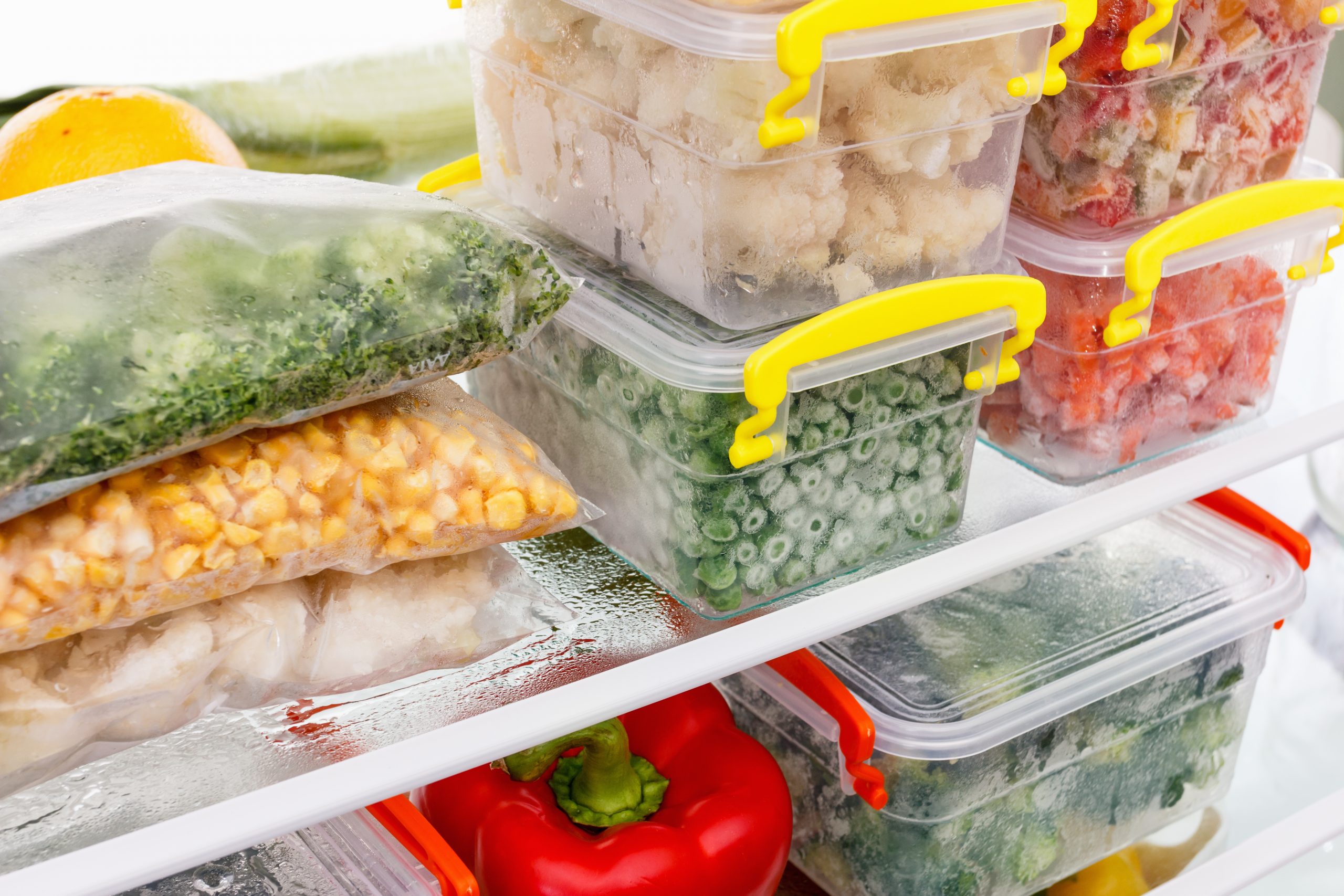Storage meals performs a significant function in making certain meals safety and preparedness. Whether or not it is for emergencies, long-term storage, or just decreasing meals waste, understanding storage strategies and the components that have an effect on meals shelf life is essential. On this complete information, we’ll delve into the world of storage meals, exploring strategies, dietary concerns, security pointers, and inventive makes use of.
From canning and freezing to dehydration and pickling, we’ll uncover the assorted strategies of meals preservation. We’ll additionally talk about the influence of temperature, moisture, oxygen publicity, and packaging on the longevity of saved meals. Moreover, we’ll discover methods to reduce nutrient loss and make sure the security of your saved meals.
Introduction to Storage Meals
Storage meals refers to non-perishable meals gadgets that may be saved for prolonged intervals with out spoiling. They’re important for numerous causes, together with emergency preparedness, long-term storage, and comfort.
Widespread storage meals embody canned items, dried meals, freeze-dried meals, and sure grains. These meals are sometimes processed to take away moisture and stop spoilage, making them shelf-stable for months and even years.
Advantages of Storage Meals
- Emergency Preparedness:Storage meals gives a dependable supply of diet in case of emergencies, corresponding to pure disasters or energy outages.
- Lengthy-Time period Storage:Storage meals will be saved for prolonged intervals, permitting for bulk purchases and decreased waste.
- Comfort:Storage meals is simple to arrange and will be consumed shortly, making it a handy possibility for busy people or these with restricted cooking amenities.
Strategies of Meals Storage

Preserving meals is important for long-term storage and consumption. Numerous strategies exist to increase the shelf lifetime of meals whereas sustaining its dietary worth and taste.
Canning
Canning entails sealing meals in hermetic containers and heating it to a excessive temperature to kill micro organism and stop spoilage. This technique is appropriate for a variety of meals, together with fruits, greens, meats, and seafood.
Freezing
Freezing quickly lowers the temperature of meals to inhibit bacterial development and protect its high quality. It’s a handy technique for storing perishable meals for prolonged intervals. Freezing is efficient for meats, poultry, fruits, and greens.
Dehydration
Dehydration removes moisture from meals, making a concentrated and shelf-stable product. This technique is usually used for fruits, greens, and meats. Dehydrated meals will be rehydrated earlier than consumption.
Pickling
Pickling entails preserving meals in a vinegar-based resolution. The acidity of the vinegar inhibits bacterial development and imparts a tangy taste to the meals. Pickling is appropriate for greens, fruits, and meats.
Components Affecting Meals Storage
The longevity of storage meals is influenced by numerous components, together with temperature, moisture, oxygen publicity, and packaging.
Understanding these components is essential for preserving the standard and dietary worth of saved meals.
Temperature
Temperature performs a big function in meals preservation. Excessive temperatures, each excessive and low, can speed up meals spoilage.
- Excessive temperaturespromote microbial development and chemical reactions that may result in meals degradation.
- Low temperaturescan decelerate microbial exercise however might not utterly stop spoilage.
Moisture, Storage meals
Moisture content material impacts the shelf lifetime of storage meals. Extreme moisture can create a good surroundings for microbial development and promote meals spoilage.
- Excessive moisture rangescan result in mildew, micro organism, and yeast development.
- Low moisture rangescan dry out meals and make it inclined to spoilage.
Oxygen Publicity
Oxygen is a key consider meals preservation. Publicity to oxygen may cause oxidation, which might result in rancidity, lack of vitamins, and discoloration.
- Limiting oxygen publicityhelps stop oxidation and prolongs the shelf lifetime of storage meals.
Packaging
The kind of packaging used for storage meals can considerably influence its shelf life. Packaging supplies ought to defend meals from exterior components corresponding to moisture, oxygen, and lightweight.
- Hermetic containersassist stop moisture and oxygen publicity.
- Gentle-resistant packagingprotects meals from dangerous UV rays.
- Correct sealingis important to keep up the integrity of the packaging and stop contamination.
Dietary Worth of Storage Meals
Lengthy-term meals storage is important for preparedness and may present peace of thoughts. Nonetheless, you will need to perceive the potential dietary adjustments that happen throughout meals storage and to implement methods to reduce nutrient loss.
Over time, meals can lose nutritional vitamins, minerals, and different vitamins attributable to components corresponding to oxidation, moisture, warmth, and lightweight. This may compromise the dietary worth of saved meals and scale back its general well being advantages.
Minimizing Nutrient Loss
To attenuate nutrient loss throughout meals storage, a number of methods will be employed:
- Select meals excessive in vitamins:Go for meals which can be naturally wealthy in nutritional vitamins, minerals, and antioxidants, corresponding to fruits, greens, and entire grains.
- Retailer meals in hermetic containers:Publicity to oxygen can speed up nutrient degradation. Retailer meals in hermetic containers to stop oxidation.
- Maintain meals in a cool, darkish place:Warmth and lightweight can harm vitamins. Retailer meals in a cool, darkish pantry or fridge to protect their dietary worth.
- Restrict publicity to moisture:Moisture can promote microbial development and nutrient loss. Maintain meals dry by utilizing moisture-absorbing supplies like silica gel packets.
- Rotate saved meals commonly:Use older meals first to stop spoilage and nutrient depletion.
Security Issues for Storage Meals
Storage meals presents comfort and peace of thoughts throughout emergencies or when recent meals is unavailable. Nonetheless, improper dealing with and storage can pose important security hazards. This part Artikels frequent security considerations and gives pointers for making certain the protection of storage meals.
Widespread Security Hazards
- Spoilage and Contamination:Storage meals can spoil attributable to micro organism, mildew, or yeast development, resulting in foodborne diseases. Improper storage circumstances, corresponding to excessive temperatures or humidity, can speed up spoilage.
- Chemical Contamination:Some storage meals containers might include dangerous chemical compounds that may leach into the meals, particularly if the containers are broken or not meant for meals storage.
- Oxygen Depletion:Storage meals packed in sealed containers can deplete oxygen, creating an surroundings conducive to the expansion of dangerous micro organism, corresponding to Clostridium botulinum, which causes botulism.
- Improper Preparation:Some storage meals require particular preparation directions, corresponding to cooking or rehydration. Failing to comply with these directions can result in foodborne diseases.
Pointers for Protected Dealing with, Storage, and Consumption
- Correct Storage:Retailer storage meals in a cool, dry, and darkish place. Splendid temperatures vary from 40 to 60 levels Fahrenheit (4 to fifteen levels Celsius). Keep away from storing meals in areas uncovered to warmth, mild, or moisture.
- Container Integrity:Guarantee storage meals containers are intact and undamaged. Keep away from utilizing containers with dents, cracks, or rust.
- Oxygen Management:When storing meals in sealed containers, guarantee they’re correctly sealed and have oxygen absorbers or desiccants to stop oxygen depletion.
- Common Inspection:Repeatedly examine storage meals for indicators of spoilage, corresponding to discoloration, mildew development, or off-odors. Discard any meals that exhibits indicators of spoilage.
- Correct Preparation:Comply with the producer’s directions for making ready storage meals. Prepare dinner or rehydrate meals completely earlier than consumption to kill any dangerous micro organism.
- Private Hygiene:Observe good private hygiene when dealing with storage meals, together with washing fingers completely and utilizing clear utensils.
Inventive Makes use of for Storage Meals

Incorporating storage meals into meals generally is a inventive and budget-friendly approach to get pleasure from nutritious and scrumptious dishes. Listed below are some progressive concepts and recipes to showcase the flexibility of storage meals:
Savory Dishes
Storage meals can be utilized to create a wide range of savory dishes. For instance, canned beans and lentils will be added to soups, stews, and casseroles for a lift of protein and fiber. Dehydrated greens will be rehydrated and added to salads, stir-fries, and pasta dishes.
Freeze-dried meat can be utilized rather than recent meat in tacos, burritos, and different dishes.
Candy Treats
Storage meals can be used to create candy treats. For instance, canned fruit can be utilized in pies, cobblers, and different desserts. Dehydrated fruit will be added to granola, path combine, and baked items. Freeze-dried berries can be utilized to make smoothies, yogurt parfaits, and ice cream.
Recipes
Listed below are a couple of recipes that showcase the flexibility of storage meals:
- Lentil Soup: Mix canned lentils, greens, and broth in a pot and simmer till the lentils are tender. Serve with crusty bread or crackers.
- Hen Stir-Fry: Stir-fry freeze-dried hen with greens and your favourite sauce. Serve over rice or noodles.
- Apple Pie: Fill a pie crust with canned apples, cinnamon, and sugar. Prime with one other pie crust and bake till golden brown.
Planning and Preparation for Meals Storage: Storage Meals

Establishing a well-thought-out meals storage plan is significant for making certain the supply of sustenance throughout emergencies or extended intervals of disruption. It entails choosing applicable storage strategies, buying important provides, and implementing a method to keep up the integrity of saved meals gadgets.
Numerous storage strategies can be found, together with canning, freezing, vacuum sealing, and dehydration. Every technique has its benefits and drawbacks, and the selection relies on the kind of meals, storage period, and obtainable assets.
Storage Provides
- Hermetic containers: Glass jars, plastic containers with tight-fitting lids, and vacuum-sealed baggage stop moisture and oxygen from coming into.
- Oxygen absorbers: These packets assist take away oxygen from vacuum-sealed baggage, extending the shelf lifetime of meals.
- Desiccants: Silica gel or moisture absorbers take in moisture, stopping spoilage.
- Labels: Clearly label containers with the contents, date of storage, and any particular storage directions.
- Storage cabinets or bins: Manage and defend saved meals from pests and environmental components.
Pattern Storage Plan
A complete storage plan ought to contemplate the next:
- Selection and dietary steadiness:Embrace a variety of meals teams to satisfy dietary wants.
- Shelf life:Select meals with various shelf lives to make sure a steady provide.
- Cupboard space:Decide the quantity of cupboard space obtainable and choose storage strategies accordingly.
- Emergency situations:Plan for various emergency conditions and tailor the storage plan to satisfy these particular wants.
FAQ Useful resource
What are the most typical sorts of storage meals?
Canned items, frozen meals, dehydrated meals, and pickled meals are among the many hottest sorts of storage meals.
How lengthy does saved meals sometimes final?
The shelf lifetime of saved meals varies relying on the kind of meals, the storage technique, and the storage circumstances. Some meals, corresponding to canned items, can final for a number of years, whereas others, corresponding to recent produce, have a a lot shorter shelf life.
Is it suitable for eating saved meals that has been opened?
As soon as opened, saved meals needs to be refrigerated and consumed inside a couple of days. For those who discover any indicators of spoilage, corresponding to mildew or an off odor, discard the meals instantly.




